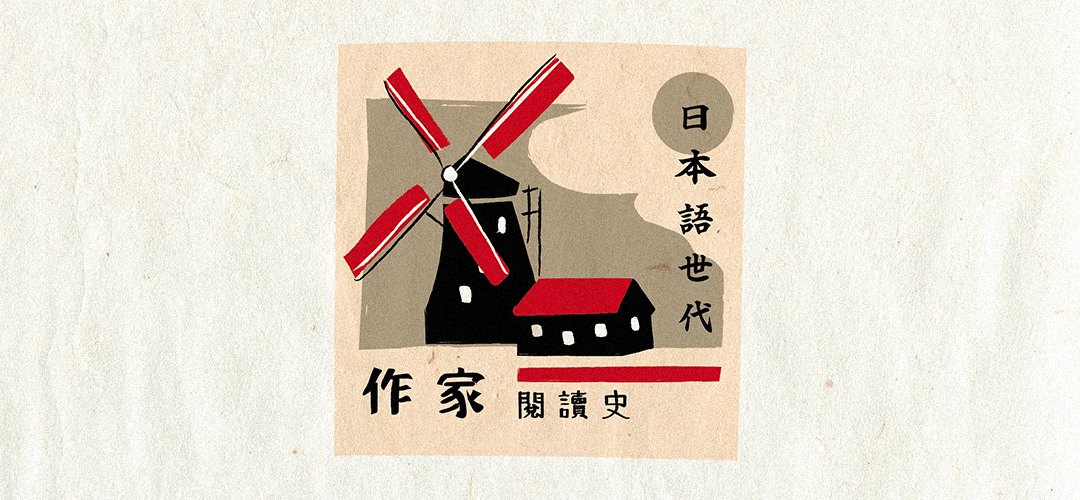 影音檔案庫
影音檔案庫


Translated by Lee Ying-Yi (李盈儀)
In 1994, Japanese modernism scholar Arisu Toshiko (愛里思俊子) presented the important essay of “Redefining ‘Japanese Modernism’ –– The Global Context of the 1930s.” She redefines the so-called “Japanese modernism” through the process of “spatiotemporal correction” between the Japanese and Western contexts. She states at the beginning of the essay,
“When Japanese scholars reflect on modernism and examine those who call themselves ‘modernists,’ they have already eliminated the most fundamental issues of modernism that should be examined at the very beginning when they raised the question. It is without doubt that the poets who write due to the self-awareness of being modernists play a significant role on the Japanese ‘modernism’ stage. However, the scholars’ definition of modernists is based on the narrower definition of ‘modernism,’ which is the modernism that occurred from a specific movement in a specific area in the Western world…. That is to say, shouldn’t we reevaluate ‘Japanese modernism’ that has derived from Japan’s own historical context, which clearly differs from that of the directly imported modernism from the West? …… There are many differences between the modernity of the Western world and the modernity of Japan, which is a modernity that occurred on the brink of the Western and achieved posteriorly.”
The greatest contribution of this essay is that Arisu Toshiko (愛里思俊子) does not consider “Japanese modernism” as a movement specifically imported from the West, but rather a natural product that originated from the context of Japan itself. She believes the “Poetry and Poetics” community that recognizes Haruyama Yukio (1902-1994) as the iconic figure has a few features:
1. A strong sense of Europeanism;
2. Regarding modernism as a “revolution of skills” and “change of form” on the linguistic level, discontinuing dialogues with histories of the past;
3. “When realizing the weak connection between the self and the new arts movements of the West, while at the same time sensing the threat of instability of one’s own position, some modernists returned to the traditional aesthetics without doubt.”
She reanalyzes the “Japanese modernism” that includes the three features mentioned above by placing it in “contemporary” Japan and the relationship between Japan and the “West.” The process of “re-contextualizing” the happening of “Japanese modernism” is exactly what I call spatiotemporal correction. Looking back on “Japanese modernism” under the status of “spatiotemporal correction” allows us to discover a more suitable explanation in a newly connected, more three-dimensional, and stable coordinate.
It is difficult to avoid the importation and stimulation of the Western ideological trend when studying Japanese modernism. The occurrence of “Taiwanese modernism” too cannot escape from the influences of Westernization –– yet more so from the colonizer, Japan. However, we often oversimplify Taiwanese modernism as “the flower of transplantation” when we discuss how the poetic styles and theories have inherited from Japanese modernism; we then furthermore consider this heritage as a symbol of the modern avant-garde, and “the overcoming of time difference.” Within this context, Japan is imagined as, or is granted a position similar to that of the Western (to Japan). Yet, in reality, Taiwan is not simply the disseminule or inheritor of Japanese aesthetic traditions. The complicated relationship of the colonizer and the colonized as well as the Japanese and Taiwanese literary world that had gradually become deeply-bonded after the 1930s are also aspects we should take into consideration when understanding “Taiwanese modernism.” In addition to the complicated relationship between Taiwan and Japan, the understanding of “Taiwanese modernism” should be placed within the context, rather than the background, of the new Taiwanese literature movement’s development. Otherwise, we would not be able to truly understand the target audience that Taiwanese modernism is actually fighting against or speaking to, and to continue to see it as a rootless, foreign transplant. It is also noteworthy that this Taiwanese context needs to “re-confront” the literature development of East Asia as well as the global as a whole –– despite in doing so would emphasize time difference. For contemporary Taiwan, we no longer need to feel self-complacent by imagining the “conquering of time difference” through Le Moulin Poetry Society; rather, the “emphasis of time difference” is even more important. The existence of time difference does not always indicate Taiwan being behind of its time, but a continuous reminder: we are neither of the Japan, nor of the West.
During the 1980s when the Martial Law era was coming to an end and “Taiwan studies” hadn’t yet started, we were granted with a case study of Taiwan’s own modern literature that occurred after the Japanese colonization era, or in other words, before the Kuomingtang (KMT) party arrived in Taiwan. This case study allows us to review the literature history narrative that used to consider the Taiwanese literature development as an influence from the literary tradition of the May Fourth New Culture Movement or as a branch from the Chinese literature. We learned from Le Moulin Poetry Society (along with other New Literature from the Japanese colonial period that were translated and discovered in the 1970s) that Taiwan had already has its own literary tradition, or even a Taiwanese version of surrealism by the Japanese colonial period. Furthermore, Taiwan’s acceptance for surrealism is slightly earlier than that of China’s (according to the proposer of “The Twin Roots of Poetry,” Chen Qianwu’s, understanding at that time), and also at least 20 years earlier than Ji Xian’s Modernist Movement (1956) and the Epoch Poetry Society’s surrealism.
When “border-crossing” such as the moving of people and the propagation of aesthetics become the academic trend of the contemporary, Le Moulin Poetry Society has once again become an important case study that connects Taiwan to the East Asia and even to the whole world. Le Moulin Poetry Society allows us to break free from the imagination of Taiwan being confined and isolated during the Martial Law period, and place Taiwan in an internet with high-velocity that is connected to the world. Positioned in the “synchronic constellation,” we are granted with slight ease from the anxiety of “belated modernity.” The Taiwan that is now forgotten by most people but was once “synchronized with the world” might be the unlimited world we can see in the movie Le Moulin.
When speaking of aesthetic dissemination in terms of “time,” we often place the world in a linear timeline with the Western world as standard to measure the differences of the “non-Western world.” However, many of the contextual differences have been simplified as a flattened time difference on this linear timeline. We can approach this issue from a different aspect: what was the Taiwanese literary field working on when André Robert Breton presented the first Surrealist Manifesto (Manifeste du surréalisme) in France in 1924? How was the Taiwanese literature developing when Katué Kitasono (1902-1978) declared “A Note December 1927” in Japan and sent it to Paris in 1927?
The so-called time difference, is in fact the matter of contexts.
During 1924 and 1927, Taiwan had undergone the “debate between modern and historical literature” and the division between Taiwan Culture Association’s leftists and rightists respectively. In the history of literature, the former officially ignited the Taiwanese New Literature Movement, whereas the latter led to the Taiwanese literary scene to lean politically left. Considering the expansion of surrealism, the Le Moulin Poetry Society was founded 9 years since Breton published the first Surrealist Manifesto; if we regard the founding of Le Moulin Poetry Society simply from the development of Taiwanese literature, it was also 9 years from the event of the “debate between modern and historical literature,” which was the movement that marked the start of the Taiwanese New Literature Movement. The conditions that conceived the avant-garde movements of Europe, such as surrealism, consists of criticisms and distrust towards the Western European’s civilization and rationality as well as the rebellion against existing literary traditions, such as Romanticism and Realism. Japan did not fully question civilization and rationality; rather, Japan accepted the different branches of modernism as a part of Europeanization or an experiment of language form. Yet, the happening of modernism is nevertheless a breakthrough for the contemporary Japanese literary field after the Meiji era.
When Chang Wojun (1902-1955) declared war to the classic literati and established the first stronghold for Taiwanese New Literature with “A Letter to the Youth of Taiwan” and “The Awful Literary Scene of Taiwan,” many issues remain in doubt and exploration, for instance the understanding of New Literature’s form and style, the languages to write in, and the methods of achieving synchronization between the spoken and written language. In other words, the “Taiwanese New Literature” remained as a concept that was yet blank and to be constructed. What is noteworthy is that the occurrence of the Taiwanese New Literature Movement was due to the social movements during the Japanese colonial period. Literati that carried the burden of the society’s progress used literature as a medium for the enlightening civilization in Taiwan, urging the progress of nationalism, and criticizing Japanese colonization. Furthermore, the intellects connected with other international left-wing activists and wrote about the labor class in Taiwan in order to seek for liberation from the social class system and the colonizer. Despite having to step back from social movements and turn to literary and cultural activities after 1931 when the left-wing activists and social movements were banned, literati had never let down the burden of social missions.
It is not difficult to understand the reason why only Le Moulin Poetry Society tried to grasp Surrealism and was considered “strangers” by men of the same country when we replace the abstract time difference with actual concrete events under the same time and space. 9 years may not seem mature enough when considering the Taiwanese New Literature from the aspects of its development and issues that needed to be solved, but its development is in fact already repressed and precocious. The surrealism of Le Moulin Poetry Society is without doubt influenced from foreign concepts; yet it is simultaneously the independent product that has flourished from the development of Taiwanese literature itself. When an ideological trend spreads in an extremely short period of time, it may seem as if there is synchronization, yet it does not share the same or similar social context. It is a form of double-layered translation whereas we are allowed to create the meaning of our position when translating. Furthermore, when looking at the issue of Taiwanese literati that were being dominated by a colonizer, instead of saying the authors of social realism were conservative and behind, or claiming they were indifferent when facing the global trend of the new ideology of modernism, they were rather using literature as weapon to trigger a larger social power, a form of “avant-garde” different from that of Le Moulin Poetry Society. They aim to popularize literature and arts by placing the enlightenment of society and the criticism towards colonialism at the top priority of literature. Just like the poets of Le Moulin, they were wholeheartedly pursuing the purity and the revolution of presentation. Poets of the Le Moulin Poetry Society and socialism authors of the Taiwanese New Literary Movement did not share the same issues; they were not even on the same dialogue platform. Thus, it would be rather meaningless to discuss synchronization or time difference when overlooking the differences in each context.
Editor: Yeh Hsing-Jou
Proofreading: Yizai Seah